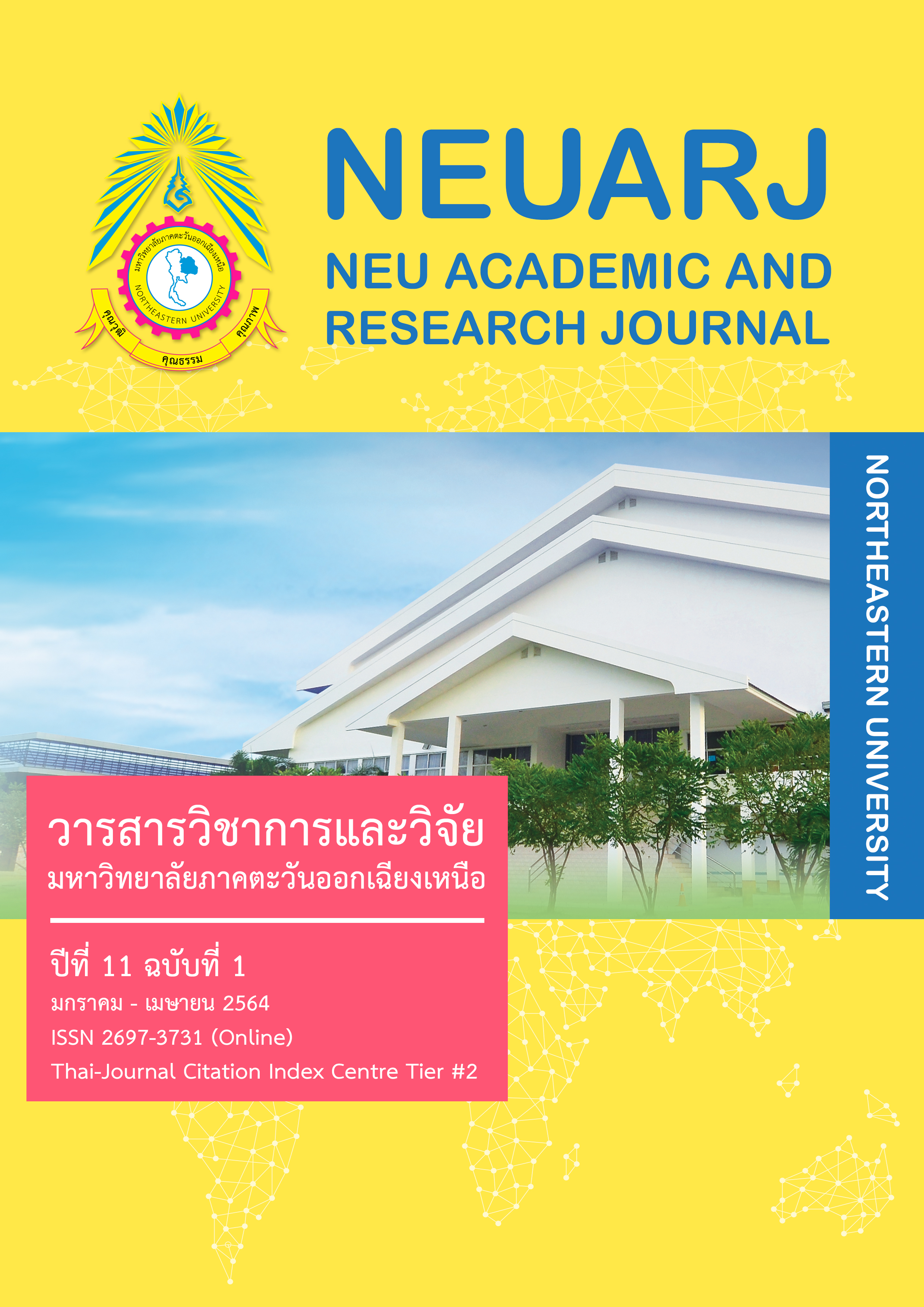The Quality of Service Relating to the Word-of-Mouth Communication of Spa Business in Maha Sarakham Municipality, Maha Sarakham Province
Keywords:
Service Quality, Word-Of-Mouth Communication, Spa BusinessAbstract
The objectives of this study were 1) to study the quality of spa business service and 2) to study the relationship of spa business’s service quality that affect word-of-mouth communication in Maha Sarakham municipality, Maha Sarakham province. The samples of this study were 70 spa’s customers. The research instrument was a questionnaire. The statistics used for analyzing data were frequency distributions, percentage, mean, standardize deviation (S.D.), and Pearson product moment correlation coefficient (PPMCC). The results found that: 1) The overall average of spa business’s service quality in Maha Sarakham municipality was high level. When considering in aspect found that the quality services consisting of physical, reliability, response, quality guarantee, and attention, the average was high in all five aspects. and 2) The results of Pearson product moment correlation coefficient between service quality that affects word-of-mouth communication in spa business showed that quality factors of five aspects: physical; reliability; response; quality guarantee; and attention, had a correlation coefficient with word-of-mouth communication in buying services of spa business in Maha Sarakham municipality at a significant level of 0.01.
References
กรมพัฒนาธุรกิจการค้า. (2559). คู่มือ เกณฑ์มาตรฐาน ธุรกิจสปา 2559. สืบค้น 20 พฤศจิกายน 2562, จาก https://www.dbd.go.th/index.php.
บุญชม ศรีสะอาด. (2556). วิธีการทางสถิติสำหรับการวิจัย เล่ม 1 (พิมพ์ครั้งที่ 5). กรุงเทพฯ: สุวีริยาสาส์น.
ภาณิกานต์ คงนันทะ. (2553). ปัจจัยที่มีอิทธิพลต่อการเลือกใช้บริการนวดแผนไทยของนักท่องเที่ยวชาวต่างชาติบนถนนข้าวสาร กรุงเทพฯ. วิทยานิพนธ์บริหารธุรกิจมหาบัณฑิต, สาขาวิชาการจัดการภาครัฐและภาคเอกชน, คณะการจัดการภาครัฐและภาคเอกชน, มหาวิทยาลัยศิลปากร.
วัชรินทร์ จันทร์สีมาวรรณ ทตมัล แสงสว่างและรุ่งนภา กิตติลาภ. (2562). ความคาดหวังและการรับรู้ต่อคุณภาพการให้บริการของงานจัดเก็บรายได้การประปาส่วนภูมิภาค สาขามหาสารคาม. วารสารวิชาการและวิจัย มหาวิทยาลัยภาคตะวันออกเฉียงเหนือ. 9(1), 4-16.
ศวิตา นพเกตุ. (2559). แรงจูงใจและการรับรู้คุณภาพบริการที่ส่งผลต่อ ความพึงพอใจและการสื่อสารแบบปากต่อปากของนักท่องเที่ยวชาวยุโรปที่ใช้บริการเดย์สปา ในเขตเมืองพัทยา จังหวัดชลบุรี. วิทยานิพนธ์หลักสูตรบริหารธุรกิจมหาบัณฑิต สาขาวิชาบริหารธุรกิจสำหรับผู้บริหาร วิทยาลัยพาณิชยศาสตร์ มหาวิทยาลัยบูรพา.
ศิริชัย กาญจนวาสี. (2548). ทฤษฎีการทดสอบดั้งเดิม. กรุงเทพฯ : โรงพิมพ์แห่งจุฬาลงกรณ์มหาวิทยาลัย.
สำนักงานสาธารณสุขจังหวัดมหาสารคาม. (2562). ข้อมูลการขึ้นทะเบียนธุรกิจสปา. สืบค้น 20 พฤศจิกายน 2562.จาก http://mkho.moph.go.th/mko/frontend/web/index.php/site/index.
Arsal, I. (2008). The influence of electronic word of mouth in an online travel community ontravel decisions: A case study (Doctoral dissertation). Available from ProQuest.
Cohen, M., & Bodeker, G. (2008). Understanding the global spa industry: Spa management. Routledge.
Hirschman, E. C., & Wallendorf, M. (1982). Motives underlying marketing information acquisition and knowledge transfer. Journal of Advertising, 11(3), 25-31.
Kamran Siddiqui. (2013). Heuristics for Sample Size Determination in Multivariate Statistical Techniques. World Applied Sciences Journal, 27(2): 285-287.
Liu, Y. (2013). A study of customer participation motivation service quality and satisfaction of fitness spa centers in Taiwan. Doctoral dissertation, United States Sports Academy.
Orel, F. D., & Kara, A. (2014). Supermarket self-checkout service quality, customer satisfaction, and loyalty: Empirical evidence from an emerging market. Journal of Retailing and Consumer Services. 21(2), 118-129.
Parasuraman, Zeithaml, and Berry (1988). Delivery Quality Service: Balancing Customer Perceptions and Expectations. New York: Free Press.
Sohn, D., & Leckenby, J. D (2005). Product class knowledge as a moderator of consumer’s electronic word-of-mouth behavior. In Conference Proceedings on the American Academy of Advertising (pp. 20-26). Lubbock, TX: American Academy of Advertising.
Zeithaml, V.A. (1988). Delivering Quality Service, Balancing Customer Perceptions and Expections. New York: The Free Press.



